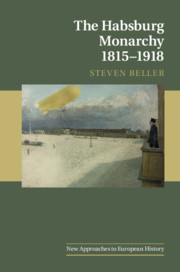Book contents
- Frontmatter
- Contents
- List of Figures
- List of Maps
- Map
- Acknowledgements
- Introduction: Austria and Modernity
- 1 1815–1835: Restoration and Procrastination
- 2 1835–1851: Revolution and Reaction
- 3 1852–1867: Transformation
- 4 1867–1879: Liberalisation
- 5 1879–1897: Nationalisation
- 6 1897–1914: Modernisation
- 7 1914–1918: Self-Destruction
- Conclusion: Central Europe and the Paths Not Taken
- Bibliography
- Index
7 - 1914–1918: Self-Destruction
Published online by Cambridge University Press: 25 May 2018
- Frontmatter
- Contents
- List of Figures
- List of Maps
- Map
- Acknowledgements
- Introduction: Austria and Modernity
- 1 1815–1835: Restoration and Procrastination
- 2 1835–1851: Revolution and Reaction
- 3 1852–1867: Transformation
- 4 1867–1879: Liberalisation
- 5 1879–1897: Nationalisation
- 6 1897–1914: Modernisation
- 7 1914–1918: Self-Destruction
- Conclusion: Central Europe and the Paths Not Taken
- Bibliography
- Index
Summary
- Type
- Chapter
- Information
- The Habsburg Monarchy 1815–1918 , pp. 241 - 272Publisher: Cambridge University PressPrint publication year: 2018

